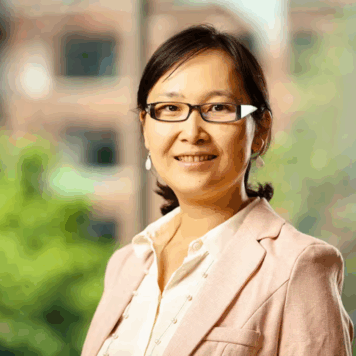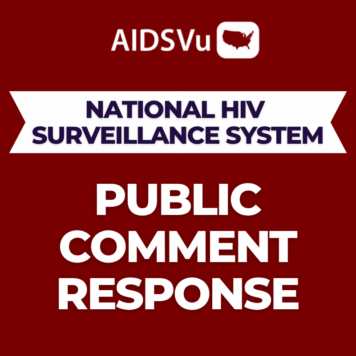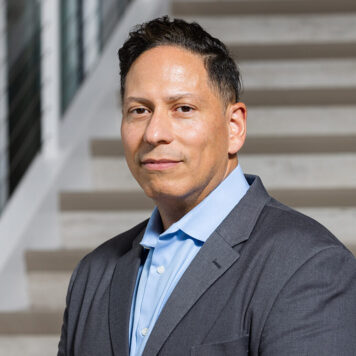Rasheeta Chandler, PhD, RN, is an Associate Professor of at Emory University’s Nell Hodgson Woodruff School of Nursing. Her research interests include HIV prevention in minority populations and comprehensive sex health promotion. Through a series of pioneering studies, Dr. Chandler has addressed the sexual health interventions for a significant population—young Black women.
You have spent your career drawn to the health and wellness of minority populations, especially young Black women. What drew you to this focus and why should we be focusing on this population when planning sexual health interventions?
This is a personal journey for me. I feel as if I must advocate for my community and thus my family. When I consider my female cousins or my aunts, I feel like I’m looking at a reflection in my likeness, people like me who are potentially at risk of acquiring HIV. I find that my career trajectory has been to help prevent that.
We should focus on sexual health interventions because of the disparate number of HIV/STI cases among Black women. Compared other ethnoracial women, Black women have the highest rate of acquiring HIV, yet we are a small portion of the overall population. We need to find a better solution for communicating with Black women about HIV prevention and treatment efforts.
It is my personal quest to prevent HIV in the Black community so that this disease doesn’t impact the people I love and care deeply for.
According to a recent study, Black women continue to be disproportionately impacted by HIV, accounting for nearly 60% of new HIV infections in US women, despite making up less than 15% of the female population. Although new HIV infections among Black people overall have been decreasing, the decrease among Black women has been less significant in recent years. What do you think accounts for these disparities and how can public health officials and community groups adjust their interventions to address them?
These disparities start to loom when Black women were forgotten or omitted from the HIV prevention and treatment strategic planning efforts. Men who have sex with men (MSM) were rightfully a focus of of the epidemic, to include advertising and clinical trials. Because the emphasis of HIV-related efforts were targeting MSM populations, Black women felt like an afterthought when HIV started to impact us and public health entities started to inundate us with requests to be involved in research and taking other recommended treatment and prevention measures. Would you not be suspicious or question the authenticity of the concern?
For some Black women, they don’t consider themselves at risk because they are predisposed to the idea that HIV only affects homosexual individuals. Since Black women have been forgotten in the conversation since the very beginning, we are now backpedaling, trying to say, “No, you are susceptible to this, and the numbers don’t look great for our community.”
Community groups or public health professionals can address this disparity by engaging and partnering with the community they wish to serve, in this instance Black women. I don’t ever impose what I think should be the answer for any community, including my own. I am a partner with them. I speak with them about what they want and see how we can collaborate. From there, it is important to understand and respect their lived experiences. You have to care because you must have buy-in from the community for any solution to work.
We must be more creative and innovative about finding solutions. Not by talking at these communities but by listening to them. Instead of communicating like we do in academia, we should focus on speaking with them in the language they understand. It is okay to use slang terms or be trendy in our messaging without feeling like we are not being academic enough. We must step down from our lofty ivory towers and be a bit more relatable to the community.
In 2022, Black people represented 14% of PrEP users, but 42% of new HIV diagnoses in 2021. Among all PrEP users in the U.S., 92% were male and only 8% were female, despite the fact that women comprised 18% of new HIV diagnoses. This indicates a high unmet need for PrEP in both Black people and women, and likely points to an unmet need in Black women as well. What should we be doing to better reach Black women who have indications for PrEP? How can we better communicate with Black women about PrEP?
I’m going to tell you what Black women tell me. As part of a study, I asked Black women, “What’s the issue with PrEP and is it something that you would use”? Some of the younger Black women were open to it but wanted to know more about what it was, what it cost, and how to access it. My overall impression was that I don’t think we communicate enough with them about their fears of it being experimental.
There is a lot of distrust among Black women when it comes to PrEP. I was recently talking to my hair stylist and other women in the salon who were Black and asked, “Would you use PrEP?” And they replied, “No, we are not going to be your guinea pigs. We don’t trust it.”
Sometimes it is also about combating whether a person feels that they are at risk. Some Black women just don’t feel like they are at risk of acquiring HIV because they may be with one partner, but potentially do not know what their partner is doing with other people. So, we should be working on overcoming that barrier. I don’t know that anyone has found the solution, and we are still actively working on engaging Black women with PrEP.
One of the things that we will have to emphasize is the narrative that we are not here to harm you. We want to help. We are not here to try and experiment on you for our benefit (a grant, manuscript or other things that advance our careers). We truly want to give you an option [option means it’s your decision] to prevent HIV, so that you can have a sex life where you are not worried about whether you will acquire this disease.
I cannot emphasize enough that going back to the community is going to be essential to figuring out how people want to be communicated with and how to convince them that we are not here to hurt them. We are here to help and partner with them to promote optimal health in their/our community.
You authored a recent study on the creation of a mobile HIV prevention app specifically designed for Black women, noting that at the time of your study there were no mHealth apps on the market that catered to cisgender Black women. Why is it important for us to tailor prevention efforts to specific audiences? How did your survey participants respond to the opportunity to use such an app?
I believe that we must tailor mobile prevention apps to the communities that use them. Originally, I was going to adapt an existing app that was created for men who engage in sex with other men, but I did community-based participatory research and they responded saying, “No, do not adapt anything for us. We feel our needs are completely unique, and what exists in the current version would need to be overhauled.” And so that is what I did. As a researcher, it’s nice to have something existing and make a tweak here and there, but that’s not what Black women said they wanted. I went back and forth trying to convince funders that Black women were receptive sexual health/HIV preventive digital interventions—it took time to finally get the financial resources to support this study.
We did several formative phases of Black women reviewing, critiquing, and advising on the app. They informed how it looks, the content that is within it, and whether their needs were being captured in the Savvy HER app (www.savvyher.me). This feedback is reflected through the app from top to bottom. We’re now running the trial, and while many researchers have trouble recruiting for clinical trials, I haven’t.
Black women have responded well because I listened to them from the outset. What Black women want people to do in this space is listen to them. If you just listen and intentionally pursue Black women in the community, they will give you the answer. You just have to seek it.
The theme of this year’s upcoming USCHA conference is “A Love Letter to Black Women,” and many public health officials, advocates, and organizations have focused their efforts in recent years towards better reaching this population. How can we better communicate with Black women and make their sexual and reproductive health needs a priority?
First and foremost, I am fond of the theme “A Love Letter to Black Women.” Often in this space, Black women feel unloved, or we feel like people have an ulterior motive for engaging us. The most effective way to communicate with Black women is to be authentic. Be true to what you intend to accomplish with women of color, particularly Black women, because we are pretty good readers of whether someone is genuine or not. And that first impression is a lasting one.
If any agency or any entity is interested in truly impacting Black women in this space, this question should be answered by both the community and the researcher , “How can we partner on this topic that is of interest to me, but also would benefit you?”
The researchers should lead any conversation with the community with, “This is how [this project] will benefit you,” not what am I getting out of it. I try to approach my work with the mindset that what I am pursuing will make a positive impact on you and ultimately the community. And yes, I get some residual from it, but that is not my primary goal for engaging you.
If you are going to say it’s a love letter to Black women, don’t make the conversation one-directional. It should be bi-directional. Then, what are you hearing back from the Black women you can actually implement and say, “I truly love you because I’ve demonstrated it, because I’ve engage you through my letter to you, I’m reading and I hear you through the letter you’re giving back to me, and I’m going to implement as much of that as I can to demonstrate my love.”
Regarding the research space, Black women should be afforded opportunities to lead the work that speaks to their community. A lot of times we are not valued as thought leaders or acknowledged as capable of contributing to the governing of research, but rather helpers to realize the vision of what others think our community needs. I feel that we should take lead roles and not just supplemental roles where we’re just recruiting or being on advisory boards—we are equipped and willing to do more.
Having more of an inclusive environment where there are different opinions and approaches to how to engage the community is vital to reaching populations like Black women.




